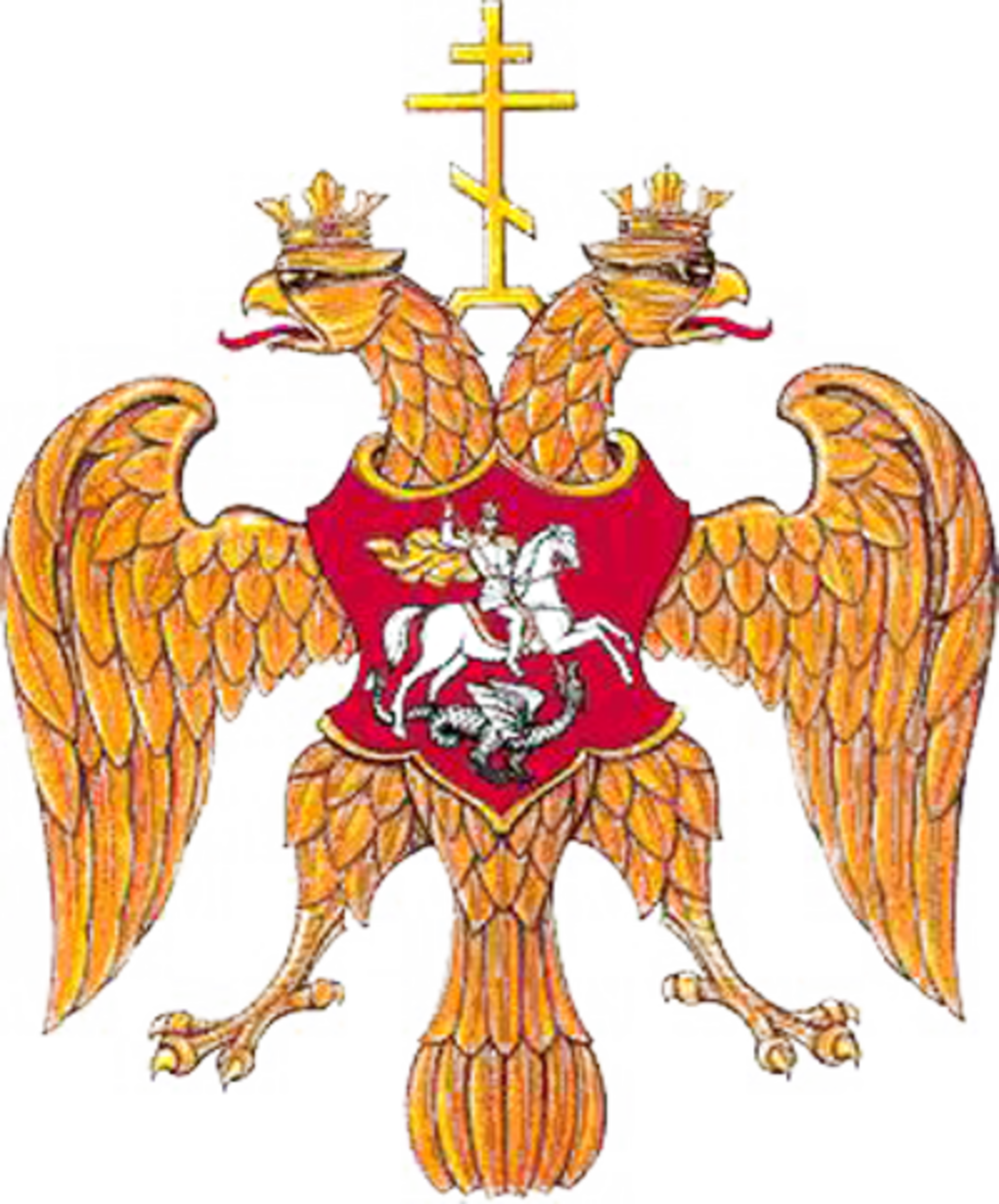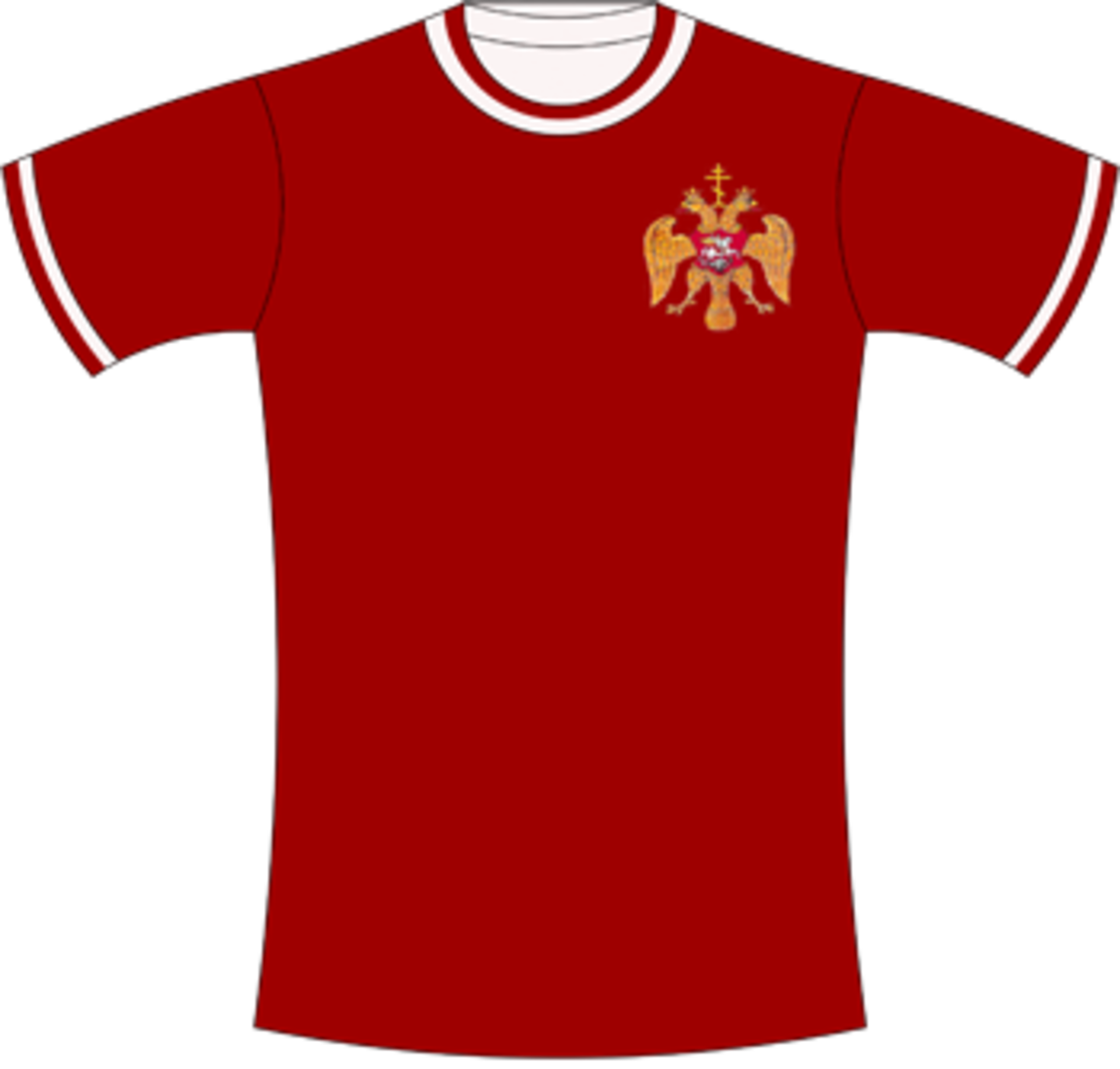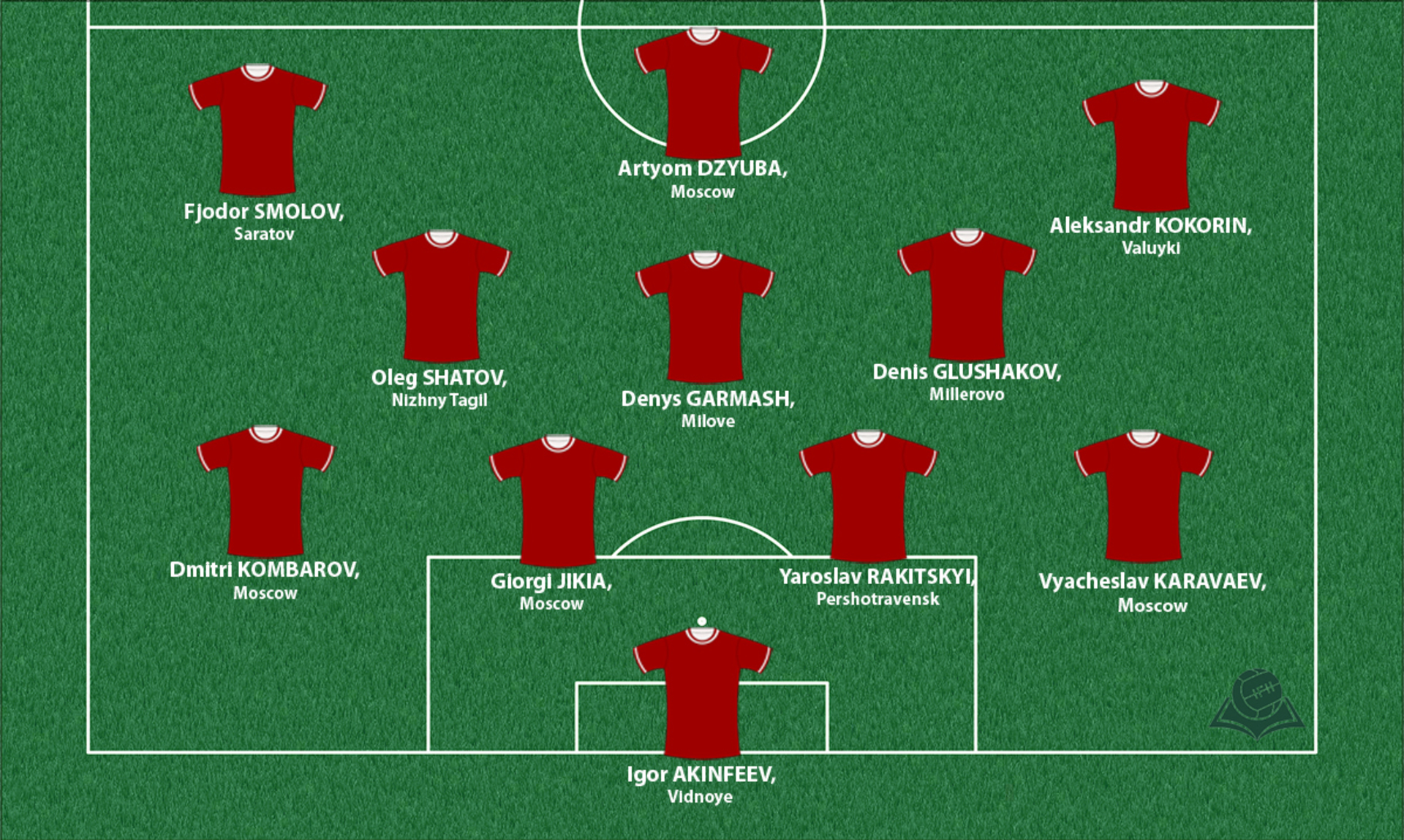The Russian Empire
In the second half of the 16th century, Russian Emperors expanded their borders towards the areas of lower Volga and Don rivers controlled by the Cossacks, and continued to expand towards Siberia. Thus, the former Principality of Moscow grew into a huge Eurasian empire.

Coat of arms

Shirt
| Position | First name | Last name | Mjesto rođenja | Like | Dislike | |
|---|---|---|---|---|---|---|
| GK | Igor | AKINFEEV | Vidnoye |
15 |
4 |
|
| GK | Stanislav | KRITSYUK | Tollyatti |
0 |
0 |
|
| GK | Yuri | LODIGIN | Vladimir |
0 |
1 |
|
| DC | Sergej | IGNASHEVIC | Moscow |
0 |
0 |
|
| DC | Vasili | BEREZUTSKI | Moscow |
5 |
1 |
|
| DC/DRL | Andrey | SEMENOV | Moscow |
3 |
2 |
|
| DC/DRL | Ivan | NOVOSELTSEV | Moscow |
0 |
1 |
|
| DLC | Yaroslav | RAKITSKY | Pershotravensk |
5 |
0 |
|
| DRL/DMC | Roman | SHISHKIN | Voronezh |
0 |
0 |
|
| DR | Vyacheslav | KARAVAEV | Moscow |
2 |
1 |
|
| DLC/ML | Georgi | JIKIA | Moscow |
3 |
2 |
|
| DL/ML | Emir | NABIULLIN | Kazan |
0 |
0 |
|
| DMC | Denys | GARMASH | Milove |
0 |
0 |
|
| DMC | Roman | EMELJANOV | Pavlovo |
0 |
1 |
|
| MC | Artur | YUSUPOV | Samara |
0 |
0 |
|
| MC | Denis | GLUSHAKOV | Millerovo |
1 |
2 |
|
| MC | Pavel | MAMAEEV | Moscow |
4 |
1 |
|
| MC | Ruslan | ROTAN | Poltava |
0 |
0 |
|
| MRC | Aleksandr | SAMEDOV | Moscow |
3 |
1 |
|
| ML/DL | Dmitri | KOMBAROV | Moscow |
4 |
4 |
|
| ML/DL | Yuri | ZHIRKOV | Tambov |
0 |
0 |
|
| MRLC | Oleg | SHATOV | Nizhny Tagil |
2 |
2 |
|
| AMC | Oleg | IVANOV | Moscow |
2 |
1 |
|
| MRL/DR | Oleg | GUSEV | Sumy |
4 |
1 |
|
| AMRL | Denis | CHERYSHEV | Nizhny Novgorod |
10 |
1 |
|
| AMRL | Vladislav | IGNATJEV | Naberezhnye Chelny |
0 |
0 |
|
| FRLC | Fyodor | SMOLOV | Saratov |
4 |
1 |
|
| FC | Aleksandr | BUKHAROV | Naberezhnye Chelny |
0 |
0 |
|
| FC | Fedor | CHALOV | Moscow |
1 |
1 |
|
| FC | Vladimir | GLADKYI | Lozova |
0 |
0 |
|
| FC/SS | Aleksandr | KOKORIN | Valuyki |
3 |
0 |
|
| FC/SS | Artyom | DZYUBA | Moscow |
9 |
1 |
(Today part of: western Russia, eastern Ukraine)
Ivan IV the Terrible (ruled 1533 – 1584) proclaimed himself Emperor of Russia (1547), and introduced the ZemskySobor (a parliament consisting of landowners), which reduced the power of boljars and the Church. In a series of attacks aimed to centralize the state, the Emperor took Kazan and Astrahan from the Tatars, expanded his borders towards the areas of lower Volga and Don rivers controlled by the Cossacks, and continued to expand towards Siberia. At the same time, in mid-16th century, the expansionist aspirations of Moscow turned towards the Baltics because Russians did not possess ports, and their trade depended on the intermediation of the Hanseatic League. In general, Russian trade with Western and Southern Europe occurred mostly through the northern route, along rivers, towards the Baltics, as the shores of the Black Sea remained in enemy hands from the beginning of the 13th century until the end of the 18th century.
Ivan entered Estonia, crushed the resistance of the Livonian Order, and took Narva (1568), which represented one of the biggest and most decisive shifts in the history of the Baltics that finally gave Russia an important corridor towards the West. The consequences of those conquests were represented in the future conflicts between Russia and their new powerful enemies, the Polish-Lithuanian Union and Sweden, who wanted to cut off all trade towards Narva, and redirect it towards ports under their control. As early as the beginning of the 17th century started to Moscow suffer their raids. In internal politics, the Emperor systematically crushed the resistance of independent nobility and, executing them by their thousands, confiscated their lands, and divided them between his followers –the oprichniks– noblemen in service, who held lands as “prebend” (payment) for life.
Sources
- Fernard BRAUDEL, Civilizacije kroz povijest, Zagreb, 1990.
- Felipe FERNANDEZ-ARMESTO, Narodi Europe, Zagreb, 1997.
- Grupa autora, Povijest: Humanizam i renesansa, doba otkrića, knjiga VIII., Zagreb 2008.
- Grupa autora, Povijest: Doba apsolutizma (17. stoljeće), knjiga X., Zagreb 2008.
